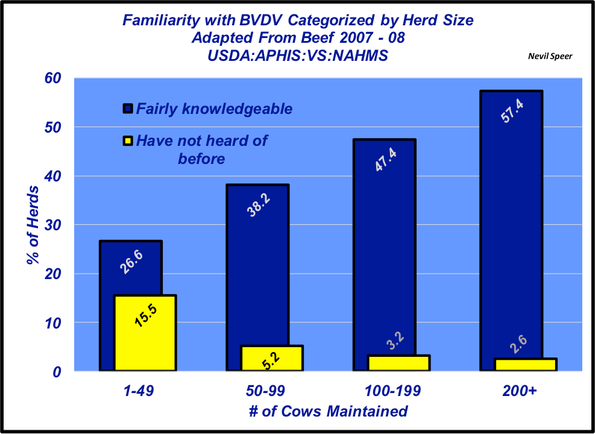Are you familiar with BVD?
BVD is a wreck if it gets into your cowherd. Surprisingly, however, some producers are not familiar with the disease.
April 14, 2016

The National Institute for Animal Agriculture, in partnership with the National Cattlemen’s Beef Association, recently hosted a one-day industry symposium on bovine viral disease (BVD) in Kansas City. The purpose of the symposium was to address producer education, prevention strategies and discuss industry-wide solutions going forward.
BVD affects the production abilities of cows and can cause the loss of calves. Transient infection symptoms include diarrhea, decreased milk production, reproductive disorders, increased occurrence of other diseases and death. Fetal infection can cause abortions, congenital birth defects, abnormally weak and small calves and persistently infected (PI) animals. PI animals represent an important source of disease risk both within the herd and across the industry.
USDA is preparing to initiate data collection for NAHMS Beef 2017 that will include some assessment of producer awareness and prevention strategies against BVD. The study will involve interviews with producers about health and management of their cattle. Meanwhile, the most recent industry-wide data that’s available sources from NAHMS Beef 2007-08.

This week’s illustration highlights some key aspects around BVD. Specifically, the graph reflects producer familiarity with BVD categorized by size of their respective cowherd. The data clearly reflects the level overall knowledge and familiarity improves in accordance with the number of cows maintained.
The data provided above is nearly 10 years old. What’s your assessment of progress since the release of Beef 2007-08? Has the beef industry improved in terms of producer awareness, or will Beef 2017 reveal a similar trend? How do you think the beef and dairy industry could further improve producer awareness and knowledge about BVD? Leave your thoughts in the comments section below.
Nevil Speer is based in Bowling Green, Ky., and serves as vice president of U.S. operations for AgriClear, Inc. – a wholly-owned subsidiary of TMX Group Limited. The views and opinions of the author expressed herein do not necessarily state or reflect those of the TMX Group Limited and Natural Gas Exchange Inc.
You might also enjoy:
Be aware of rabies' warning signs in cattle
11 must-read profitability tips from Burke Teichert
Gallery: Get to know the 2016 Seedstock 100 operations
3 key production areas that contribute to ranch-level sustainability
About the Author(s)
You May Also Like





